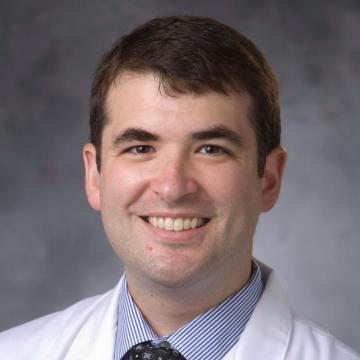The research focus of the Tighe laboratory is performing pulmonary basic-translational studies to define mechanisms of susceptibility to lung injury and disease. There are three principal focus areas. These include: 1) Identifying susceptibility factors and candidate pathways relevant to host biological responses to environmental pollutants such as ozone, woodsmoke and silica, 2) Defining protective and detrimental functions of lung macrophage subsets and their cross talk with the epithelium to regulate lung injury and repair, and 3) Determining the prognostic and theragnostic efficacy of 3D lung gas exchange imaging in pulmonary fibrosis using hyperpolarized 129Xenon MRI.
-
Susceptibility Factors for Environmental Lung Disease: In NIH funded studies the Tighe lab has been performing fully translational studies of lung responses to ozone. These include cell, rodent and human exposure studies to define mechanisms of susceptibility to exposure. By carefully dissecting these links, we will gain insight into how environmental pollutants acutely induce respiratory symptoms and exacerbate chronic lung diseases. This can lead to targeted therapeutics and/or identify susceptible populations. This includes exploration of genetic factors and also other metabolic and immunologic factors.
-
Pulmonary Macrophage Functions and Crosstalk with Lung Epithelial Cells: The central hypothesis of this line of research is that macrophages are key regulators of the biologic responses to environmental pollutants and the development of chronic lung disease. The Tighe laboratory has pioneered the identification of novel pulmonary macrophage subsets and has defined their function in lung injury and repair. In both published work and areas of active investigation, the Tighe lab has identified macrophage subsets with unique genetic programming and function after challenges with environmental exposures such as ozone, wood smoke and silica. Since macrophages have both detrimental and protective functions, identifying these subsets offers the opportunity to understand their unique programing and function. This could allow development of targeted therapeutics that take advantage of these functions, polarize the immune responses and alleviate respiratory disease. In addition, we are focused on macrophage and epithelial crosstalk and how their combined responses regulate lung injury and repair. These studies include omics approaches with single-cell RNA sequencing, proteomics and metabolomics and lung organoids to identify unique signals between macrophages and epithelial cells.
-
Using Hyperpolarized 129Xenon MRI to Define Prognosis and Therapy Responses in Pulmonary Fibrosis: In industry funded studies, the Tighe lab is focused on using a novel image modality to assess prognosis and therapeutic responses in individuals with pulmonary fibrosis. Pulmonary fibrosis is a disorder of progressive scar formation in the lung that causes increased shortness of breath and persistent coughing, frequently leading to death from respiratory failure. Presently, there are limited modalities that can assess prognosis in pulmonary fibrosis and can determine which individuals are responding to therapies. To address this, the Tighe lab, in collaboration with Dr. Bastiaan Driehuys in the Department of Radiology, is using inhaled hyperpolarized 129Xenon gas MRI to define regional differences in lung gas exchange in individuals with pulmonary fibrosis. Our preliminary data suggest that baseline characteristics of 129Xenon MRI associate with pulmonary fibrosis prognosis. In addition, we observe changes in the 129Xenon MRI metrics following initiation of pulmonary fibrosis therapies. These initial observations are being confirmed in ongoing clinical trials.
Education
- , Duke University, School of Medicine (2010)
- , Boston University (2006)
- M.D., University of Tennessee Health Science Center (2002)
Recent Grants
- Red blood cell ATP export and transfusion in sepsis (R01) awarded by National Institutes of Health
- Red blood cell ATP export and transfusion in sepsis (R01) awarded by National Heart, Lung, and Blood Institute
- Red blood cell ATP export and transfusion in sepsis (R01) awarded by National Heart, Lung, and Blood Institute
- Monocyte-derived alveolar macrophage drives inflammatory response to lung ozone exposure awarded by National Institute of Environmental Health Sciences
- Monocyte-derived alveolar macrophage drives inflammatory response to lung ozone exposure awarded by National Institutes of Health
Recent Publications
- J Allergy Clin Immunol 155, no. 3 ( ): 819 - 833.e10
- Environ Res 268, ( ): 120743
- Antimicrob Agents Chemother 69, no. 2 ( ): e0139524
- J Nutr 155, no. 2 ( ): 465 - 475
- Nat Immunol 26, no. 2 ( ): 323
